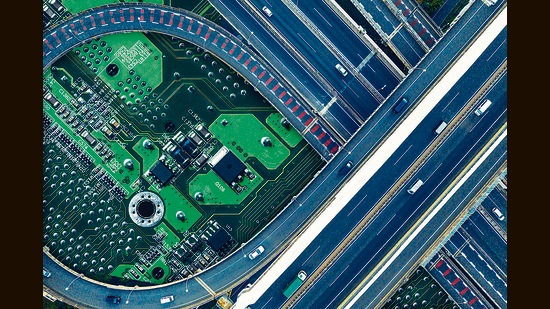Honey, they’ve shrunk the chips: Tech Tonic with Vishal Mathur
How exactly does the miniaturisation of tech work? Well, transistors are getting so tiny, you can now fit 50 billion on a chip the size of a fingernail. See how this is changing your TVs, speakers, smartphones.
Exactly what is going on behind the screens? As tech gets lighter, slimmer, more capable, and diversifies into new categories, it’s time to take a fresh look at the chips (more like wafers now) making all this possible.

How do ultra-slim TVs manage even better display, premium audio speakers fit in one’s pocket, and smartwatches now stand in for smartphones? There’s other hardware involved, of course. New smartphone batteries are denser and slimmer, with many times the capacity of their clunkier predecessors; cameras are shrinking; display tech has thinned down as it improves. But the most notable driver of the change is the chip.
A processor chip is defined by its transistors (think of the transistors as the brain cells). The more transistors it contains, the more it can do. The smaller the transistors, the smaller the eventual device can be.
In keeping with Moore’s Law, the number of transistors in a dense integrated circuit has doubled approximately every two years. But the transistors have also been shrinking in size. This has meant that as processing power kept increasing, the processors themselves became smaller.
Consider this: the average transistor for a smart device measured 90 nm or nanometres in 2003, and fell thereafter to… 65 nm in 2005, 45 nm in 2007, 32 nm in 2010, 22 nm in 2012, and about 4 nm today, with plans now for 2nm transistors too. (A nanometre, for reference, is one-billionth of a metre. Just how small is that? A human hair is 80,000 to 100,000 nanometres wide.)
As the market underwent a radical change, with smart handheld devices becoming essential and exponentially profitable, the players at the top changed too. Those making chips for smartphones began to take the lead in development cycles, outpacing traditional giants such as Intel, which build processors primarily for PCs.
In 2013, for instance, Taiwan Semiconductor Manufacturing Company (TSMC) was the first to make 16 nm chips. In 2016, Samsung announced a 10 nm chip. Through 2017, Apple, Samsung, Huawei and TSMC each developed their own 7 nm chips. (As with all such tags, the chip itself is larger, but all transistors on it are of the size mentioned).
Last year, IBM displayed the world’s first 2-nm chip. What does this mean for the world of computing? IBM could fit 50 billion of these transistors on a chip the size of a fingernail.
And so it is that the tiny speakers can fill the house with sound; and the thin-as-a-wafer TV can have iridescent display.
Until a few years ago, there were fears that sizing down tech in this manner would lead to issues such as overheating. That’s been addressed in two ways. The new processors require less power, which in turn helps reduce heat generation. And tech companies have devised new cooling systems. Phones and tablets now have heat sinks and liquid cooling tubes; laptops have replaced the clunky (and often noisy) fans with smaller, more efficient, quieter ones.
The mission to make gadgets slimmer and sleeker isn’t slowing down. Every new laptop pushes the case for how it is thinner than its successors and / or rivals. New phones are still shaving off the millimetres to allow them to sit better in the hand.
Coming soon: Earphones that can do more (they can already record and modulate bass and treble); smarter homes; in-car infotainment via 4G, perhaps all controlled by a smartwatch.
All Access.
One Subscription.
Get 360° coverage—from daily headlines
to 100 year archives.



HT App & Website






